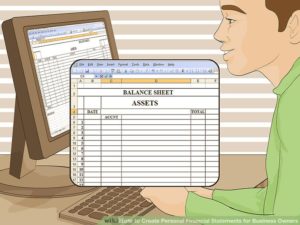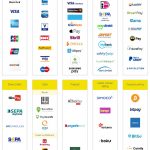 Fixed assets would be the long-term things the business owns which the small business has acquired and uses to generate company over a number of years. Fixed assets consist of tangible things like land and buildings, plant and machinery, fixtures and fittings, cars and computers.
Fixed assets would be the long-term things the business owns which the small business has acquired and uses to generate company over a number of years. Fixed assets consist of tangible things like land and buildings, plant and machinery, fixtures and fittings, cars and computers.
The numerical worth of the fixed assets shown inside the balance sheet represents the original price of those things less the amount that has written off as accumulated depreciation. Depreciation is definitely the quantity that management has decided to reduce the net worth with the assets as those assets are employed and also serves to put apart from the declared management profits that quantity which would frequently be needed at some future date to replace those assets.
Fixed assets contain a category known as intangible assets. An intangible asset is really a long-term acquisition by the business that may not be a physical item. Intangible assets would incorporate things such as goodwill which is an level of funds the organization has paid out to acquire yet another small business or certain rights.
Other intangible assets would be investments in royalties, trade marks and patents. Products the organization has bought to assistance and extend its small business empire. Long term investments which include loans, debentures and shareholdings would also be regarded as intangible assets.
Existing assets will be the things the business enterprise owns which can change from day to day and offer a snapshot of the asset liquidity with the business enterprise. Current assets contain stock which will be created up of each completed stock offered for resale, work in progress and raw supplies.
Other existing assets include debtors which can be the quick term dollars owed for the business normally from clientele and prospects who’ve received credit terms. Debtors may also include funds the business enterprise has paid out ahead of time in the liability, prepayments.
When the small business includes a credit balance in the bank then that is also integrated in present assets as could be a credit balance on a company credit card, money in hand as well as other short term investments the organization can quickly turn into money.
Existing liabilities are commonly shown instantly beneath the existing assets as the size of each and every balance is definitely an indication from the liquidity on the company.
Current liabilities represent the quick term debts of the business being amounts owing that should really be repaid inside one year which can be before the subsequent balance sheet is expected for publication by most organizations.
Current liabilities contain trade creditors which are the quick term debts owed by the organization to its suppliers as well as other creditors given that it’s typical practise to separate debts owed to the tax authority like vat, tax deductions from sub contractors, earnings tax and national insurance coverage liabilities and also other corporate taxes.
When the enterprise has short term loans repayable within a single year these items would be integrated with things like bank overdrafts and also other brief term financial arrangements.
Long term debts and financial agreements which includes director loan accounts which don’t have a quick term repayment plan will be long-term liabilities. Creditors are also incorporated in long-term liabilities exactly where there is certainly an agreement for repayment longer than 1 year.
The final section with the balance sheet concerns the capital of the enterprise. Even Though the owners of that capital which include the shareholding regard the item as an asset to themselves for the enterprise it really is a long-term liability as the small business properly owes that revenue to its shareholders as is the case of retained income and reserves which is also owned by the shareholders. The total on the assets side on the balance sheet and also the liabilities side must always be the same. That is mainly because to create a balance sheet double entry bookkeeping is utilized to record all financial transactions. So whenever an accounting entry is created it can be made twice to reflect the action and reaction.
An instance of double entry bookkeeping could be buy of stock from a supplier. The stock acquired is definitely an asset though until paid the amount invoiced by the supplier is a debt, the creditor and a liability. In accounting terms the transaction is recorded by debiting the stock account and crediting the trade creditor account.
Alternatively when goods are sold by the company the double entry bookkeeping could be to debit the customer account, the debtorArticle Submission, as the proceeds owed by the consumer is now an asset. The equal and opposite financial record becoming to lessen the stock worth since those goods are now sold and no longer an asset with the business.









